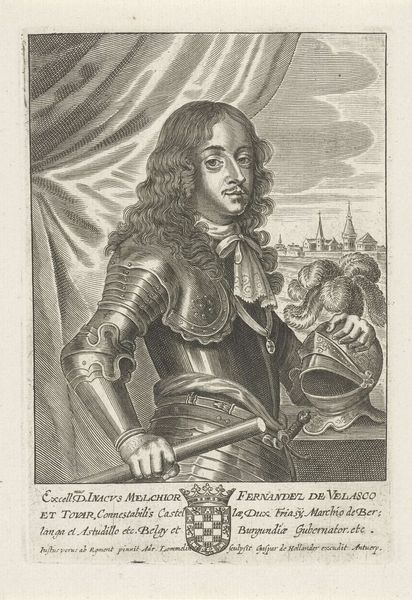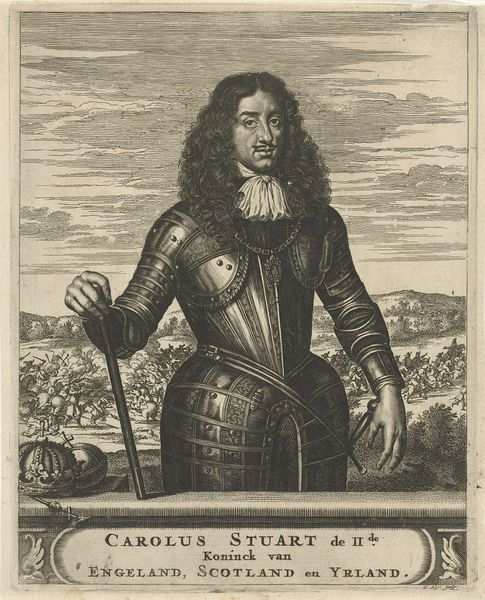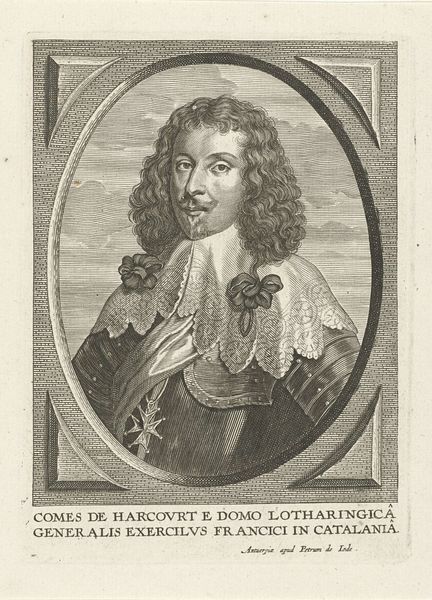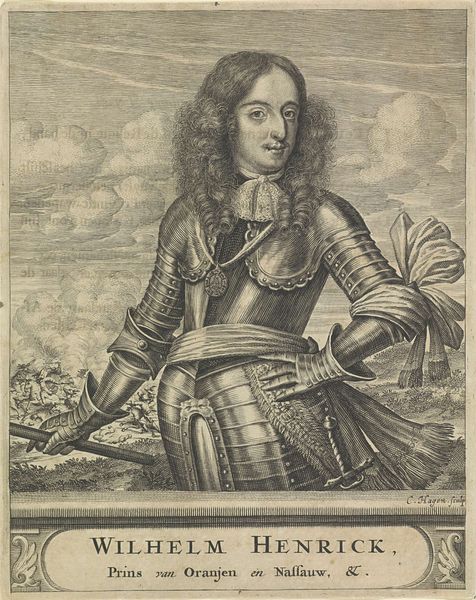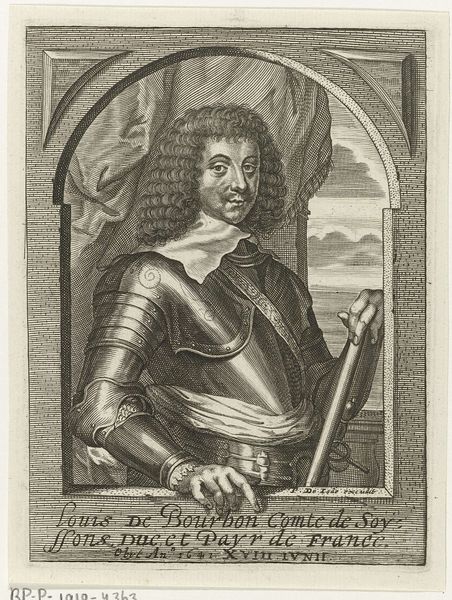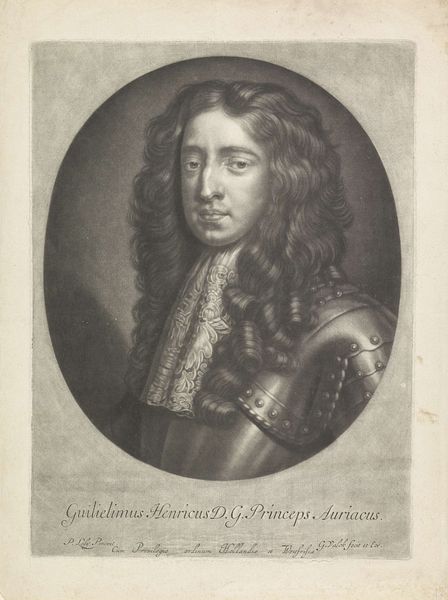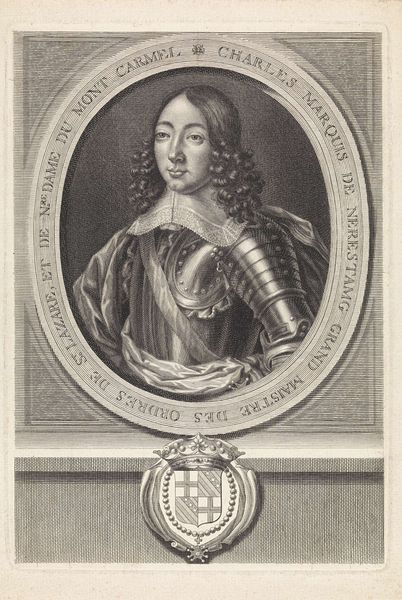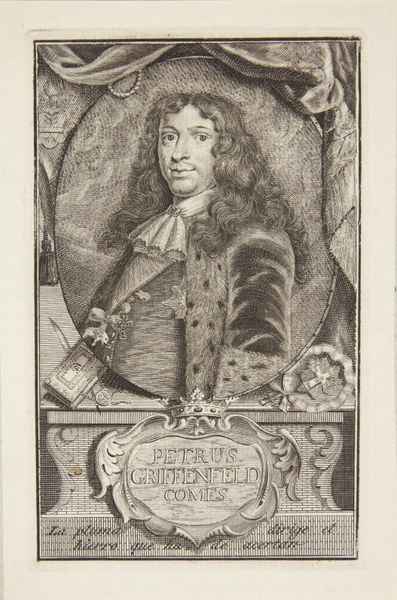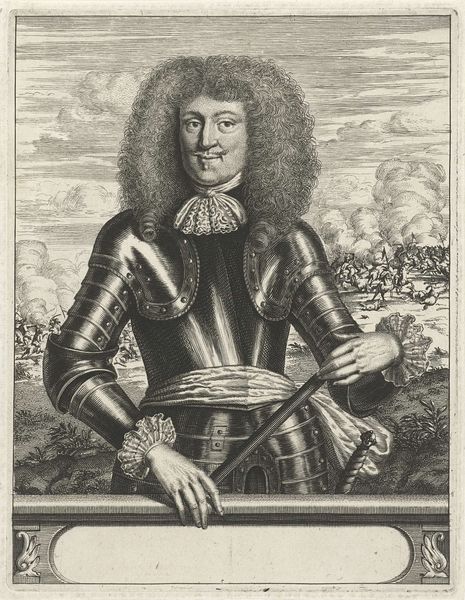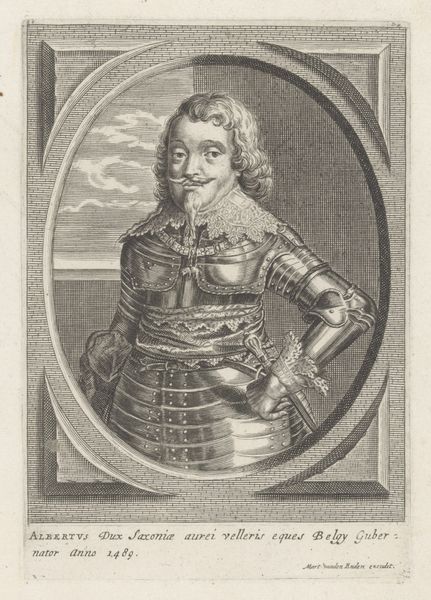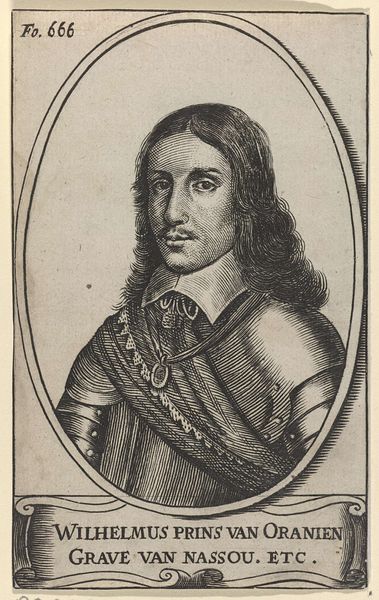
engraving
#
portrait
#
baroque
#
old engraving style
#
portrait drawing
#
history-painting
#
engraving
Dimensions: height 220 mm, width 160 mm
Copyright: Rijks Museum: Open Domain
Curator: Here we have a portrait of Hendrik Casimir, Prince of Nassau, an engraving that likely dates between 1663 and 1695. The fine lines and subtle shading are quite striking. Editor: The immediate impact for me is one of controlled grandeur, though that could come just from knowing he's a prince. Look at the way the light plays across his armor, and how sharply those crisp lines of the engraving articulate wealth. Curator: The Baroque style is definitely at play, isn’t it? The swirling curls of his hair, the elaborate lace collar… It’s all carefully arranged to project a sense of power and refined elegance. The composition places him centrally, commanding the viewer's attention. Editor: Yes, it is definitely well done, especially in how those repetitive patterns of his curls and clothing get picked up in the turbulent battle scene behind him, adding complexity in both materiality and symbolism. It draws your attention to production but subtly! Look how every millimeter has to be etched into the printing plate by the artist—consider the labour in that alone, from extraction to print. Curator: Precisely, and there's a clear visual hierarchy established. Our focus is immediately drawn to the sitter’s face due to the engraver’s skilled use of chiaroscuro. His direct gaze enhances this sense of connection and authority, locking the viewer into a direct confrontation. Editor: It really brings out how printing, in this case engraving, can solidify hierarchies and maintain particular stories or values, not to say the technical prowess necessary for this engraving does not stand up on its own! But look to the means of its reproduction—how many of these images were spread and what role it played. That is key to understanding its impact. Curator: An excellent point. Considering those factors illuminates how images like this one acted as agents of propaganda. They propagated ideals of aristocratic power and reinforced the social order within society. Editor: The circulation of such pieces reinforces their purpose, far beyond its immediate aesthetic merit, don’t you think? From process, production and impact we gain insight beyond the Prince and artist in how it affected Dutch culture. Curator: It allows us a fuller, more nuanced reading of the artwork in both the historical sense but as something alive now in how we, the audience, read this object. Editor: I'll leave it on that thought! It can be a prompt in understanding labor or class relationships from a particular moment in history.
Comments
No comments
Be the first to comment and join the conversation on the ultimate creative platform.
